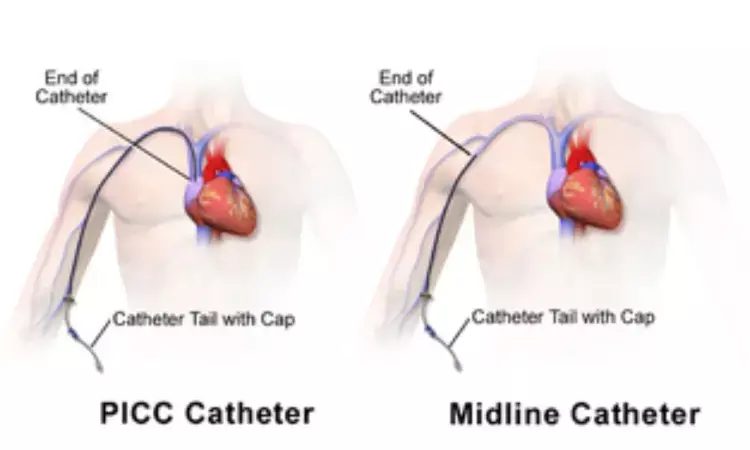- Home
- Medical news & Guidelines
- Anesthesiology
- Cardiology and CTVS
- Critical Care
- Dentistry
- Dermatology
- Diabetes and Endocrinology
- ENT
- Gastroenterology
- Medicine
- Nephrology
- Neurology
- Obstretics-Gynaecology
- Oncology
- Ophthalmology
- Orthopaedics
- Pediatrics-Neonatology
- Psychiatry
- Pulmonology
- Radiology
- Surgery
- Urology
- Laboratory Medicine
- Diet
- Nursing
- Paramedical
- Physiotherapy
- Health news
- Fact Check
- Bone Health Fact Check
- Brain Health Fact Check
- Cancer Related Fact Check
- Child Care Fact Check
- Dental and oral health fact check
- Diabetes and metabolic health fact check
- Diet and Nutrition Fact Check
- Eye and ENT Care Fact Check
- Fitness fact check
- Gut health fact check
- Heart health fact check
- Kidney health fact check
- Medical education fact check
- Men's health fact check
- Respiratory fact check
- Skin and hair care fact check
- Vaccine and Immunization fact check
- Women's health fact check
- AYUSH
- State News
- Andaman and Nicobar Islands
- Andhra Pradesh
- Arunachal Pradesh
- Assam
- Bihar
- Chandigarh
- Chattisgarh
- Dadra and Nagar Haveli
- Daman and Diu
- Delhi
- Goa
- Gujarat
- Haryana
- Himachal Pradesh
- Jammu & Kashmir
- Jharkhand
- Karnataka
- Kerala
- Ladakh
- Lakshadweep
- Madhya Pradesh
- Maharashtra
- Manipur
- Meghalaya
- Mizoram
- Nagaland
- Odisha
- Puducherry
- Punjab
- Rajasthan
- Sikkim
- Tamil Nadu
- Telangana
- Tripura
- Uttar Pradesh
- Uttrakhand
- West Bengal
- Medical Education
- Industry
Central catheters safer than PICCs for short-term venous access: JAMA

USA: Midline catheters versus peripherally inserted central catheters (PICCs) for short-term indications are associated with a lower risk of occlusion and bloodstream infection, a recent study has revealed. However, it is not clear whether the risk of catheter-associated deep vein thrombosis (DVT) is similar or greater with midlines compared with PICCs for short-term use. The study appears in JAMA Internal Medicine.
In simpler words, judicious use of midlines over PICCs may improve patient safety however there is a need for randomized clinical trials to compare these devices.
Midlines and PICCs are used frequently for short-term venous access; whether one is safer than the other in this setting has not been adequately reported. To shed light on the same, Lakshmi Swaminathan, St Josephs Mercy Health System, Ann Arbor, Michigan, and colleagues aimed to compare outcomes between patients who had a PICC vs midline placed for the indication of difficult vascular access or antibiotic therapy for 30 or fewer days.
The study analyzed data from a multihospital registry including patients who had a PICC or midline placement for the indications of difficult venous access or intravenous antibiotic therapy prescribed for 30 or fewer days. Included patients were admitted to a participating site from December 2017 through January 2020.
The main outcomes were major complications, including a composite of symptomatic catheter-associated deep vein thrombosis, catheter-related bloodstream infection, and catheter occlusion.
The researchers included data on 10 863 patients, 5758 with PICCs, and 5105 with midlines.
Key findings include:
- After adjusting for patient characteristics, comorbidities, catheter lumens, and dwell time in logit models, patients who received PICCs had a greater risk of developing a major complication compared with those who received midlines (odds ratio, 1.99).
- Reduction in complications stemmed from lower rates of occlusion (2.1% vs 7.0%) and bloodstream infection (0.4% vs 1.6%) in midlines vs PICCs; no significant difference in the risk of DVT between PICCs and midlines was observed.
- In time-to-event models, similar outcomes for bloodstream infection and catheter occlusion were noted; however, the risk of DVT events was lower in patients who received PICCs vs midlines (hazard ratio, 0.53).
- Results were robust to sensitivity analyses.
"In this cohort study among patients with the placement of midline catheters vs PICCs for short-term indications, midlines were associated with a lower risk of bloodstream infection and occlusion compared with PICCs," concluded the authors. "Whether DVT risk is similar or greater with midlines compared with PICCs for short-term use is unclear. Therefore, there is a need for randomized clinical trials comparing these devices for this indication are needed."
Reference:
Swaminathan L, Flanders S, Horowitz J, Zhang Q, O'Malley M, Chopra V. Safety and Outcomes of Midline Catheters vs Peripherally Inserted Central Catheters for Patients With Short-term Indications: A Multicenter Study. JAMA Intern Med. Published online November 29, 2021. doi:10.1001/jamainternmed.2021.6844
Dr Kamal Kant Kohli-MBBS, DTCD- a chest specialist with more than 30 years of practice and a flair for writing clinical articles, Dr Kamal Kant Kohli joined Medical Dialogues as a Chief Editor of Medical News. Besides writing articles, as an editor, he proofreads and verifies all the medical content published on Medical Dialogues including those coming from journals, studies,medical conferences,guidelines etc. Email: drkohli@medicaldialogues.in. Contact no. 011-43720751


